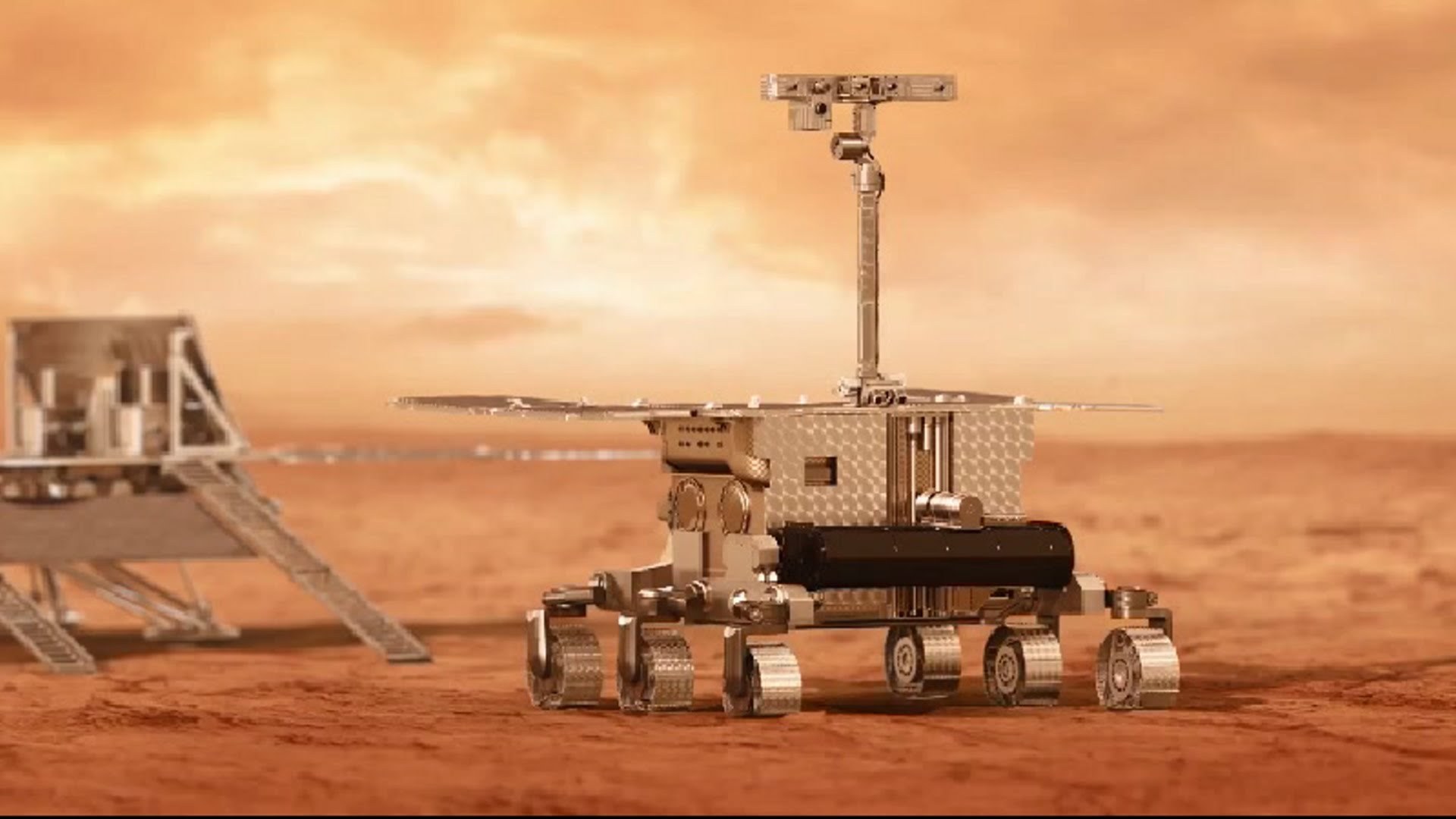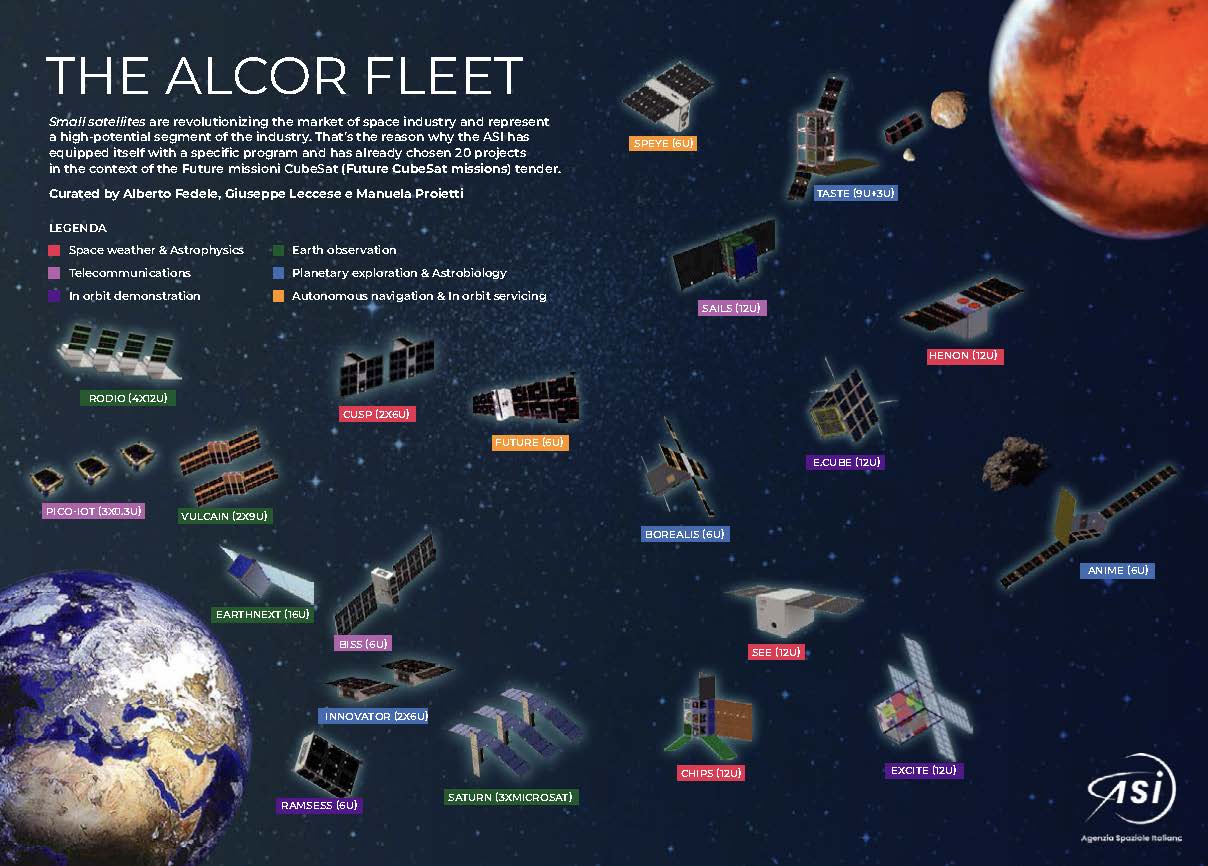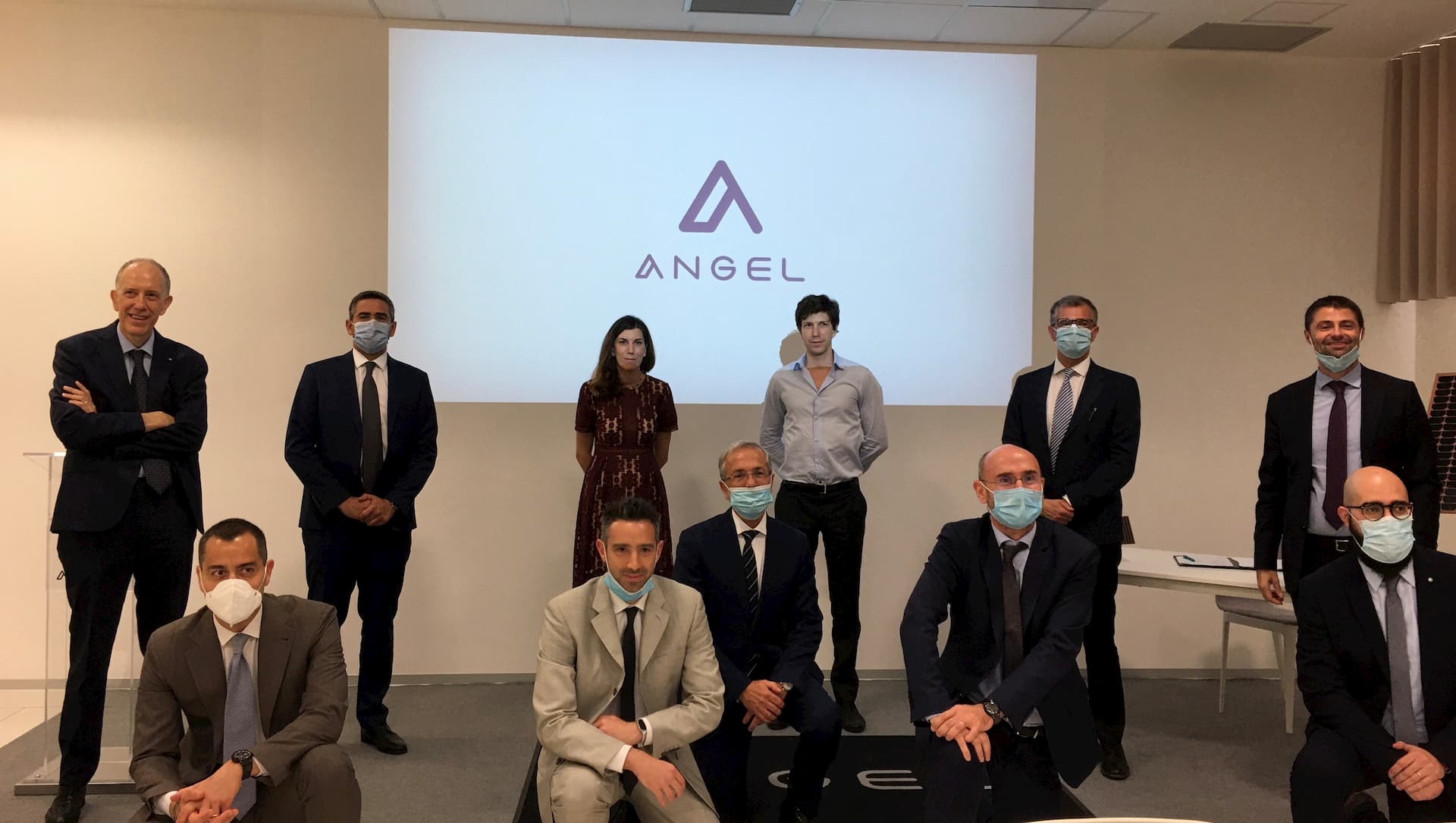Alcor and Mizar are two stars of the Ursa Major constellation which together form one of the most famous visual binaries in the sky. Alcor, also known by the nickname "little knight", is the smaller of the two and generally goes unnoticed due to Mizar, who steals the show. Only a sharp eye allows you to see both of them so an ancient Persian text of the tenth century narrates of watchmen and soldiers who were accurately chosen among those able to distinguish the two stars. And exactly from this anecdote it was born the idea of naming one of the most innovative programs of the Italian Space Agency Alcor, as it represents a program that looks far ahead, to that future of space characterized more and more by the interest in small satellites, called nanosatellites, which weight a couple of tens of kilograms as opposed to the tons of the traditional satellites.
The attention towards this class of satellites has grown over the years, based on a series of factors which, working in synergy, have made their construction, launch, and operations, increasingly feasible and economical. In particular, it is worth mentioning the miniaturization of components and subsystems, the development of the CubeSat standard, the use of commercial components (COTS), and the availability of more frequent and economic launch opportunities thanks to the development of commercial space transportation.
Alcor was born from the idea of creating an ongoing program dedicated to nanosatellites, aimed at placing our space community in a position of leadership, both at the European and international level, which acts as a technological incubator giving the opportunity to those with new ideas or those that are looking for new services, to develop at least the first prototype in order to then be able to carry on their business in a strongly “customer-oriented" perspective by autonomously identifying potential users among a large variety of players, including institutions, such as defense and civil protection.
THE PROGRAM
The twenty missions under Alcor's program cover not only all the main application domains of the space sector such as Earth observation, telecommunications, in-orbit servicing, space sustainability, astrophysics, and exploration of the universe, but also all the emerging trends observed in recent years such as, for example, the use of constellations equipped with increasingly efficient cooperation capabilities between single satellites, the use of miniaturized propulsion systems, an increase in the available power and in the capacity to transmit the data to the ground, the use of artificial intelligence for on-board data processing, the use of active and passive deorbiting systems, new high-tech solutions for foldable antennas and, finally, a greater use of nanosatellites for space exploration.
The Alcor program also includes initiatives in collaboration with national and international universities and research centers to support the development of missions and technologies. One of these initiatives (CUBENAV) has already been launched, in partnership with the University of Bologna and the Polytechnic of Milan and will end in 2023. This initiative aims to improve the maturity level of a complete Italian service for the navigation of small satellites in deep space in order to complete and consolidate the knowledge acquired from Liciacube and Argomoon missions on orbit determination and control for the benefit of the future diffusion of small interplanetary missions.



